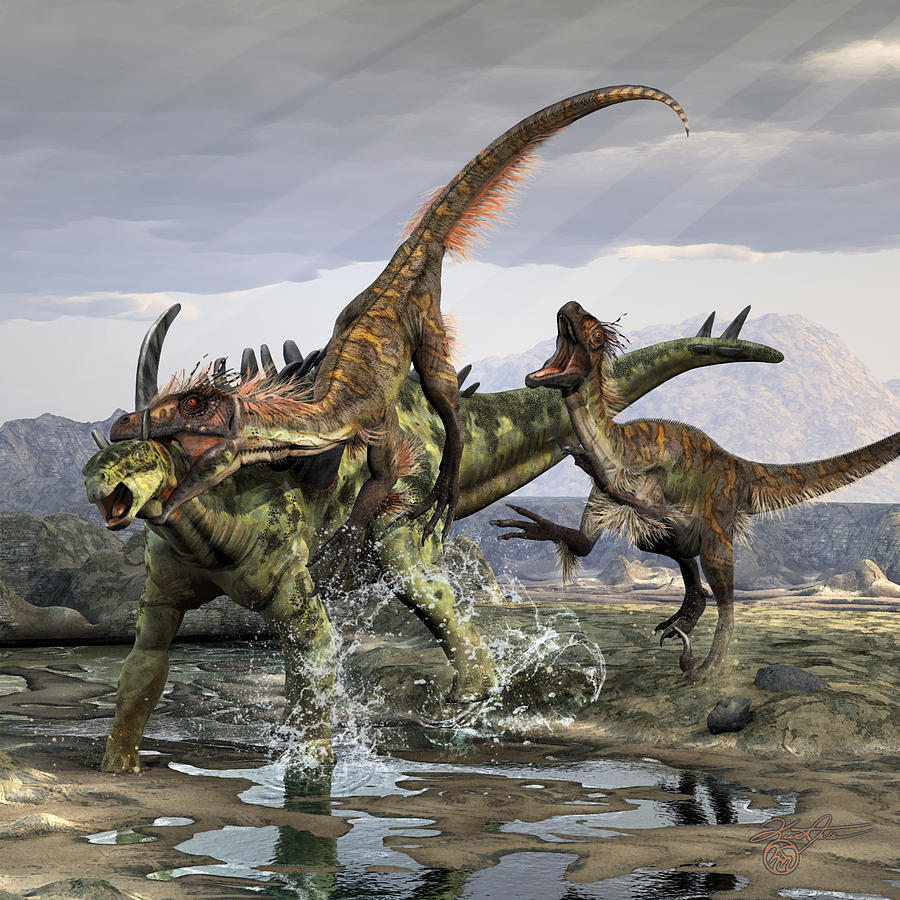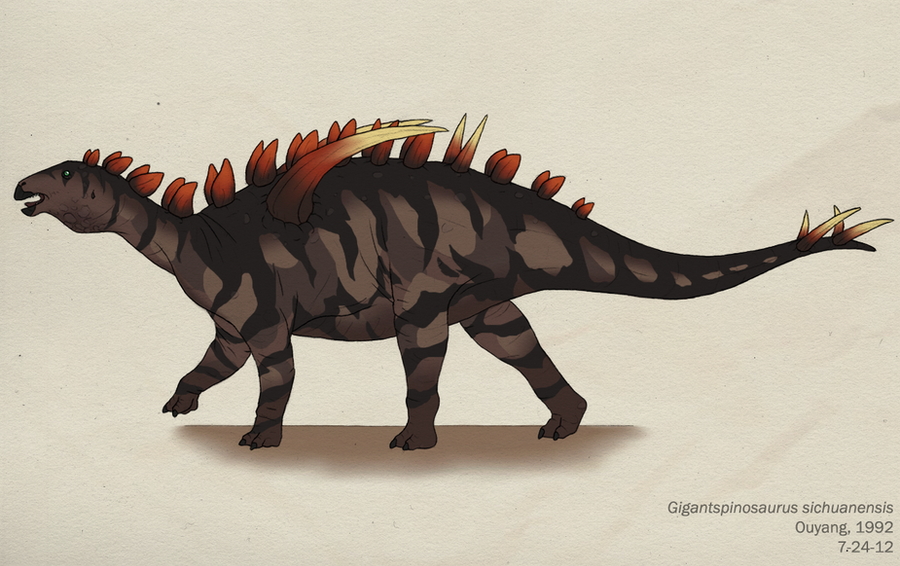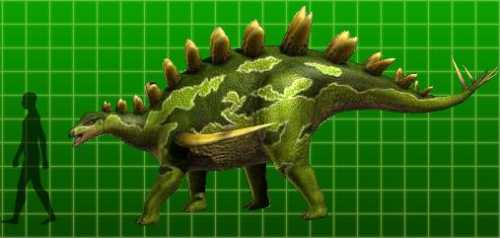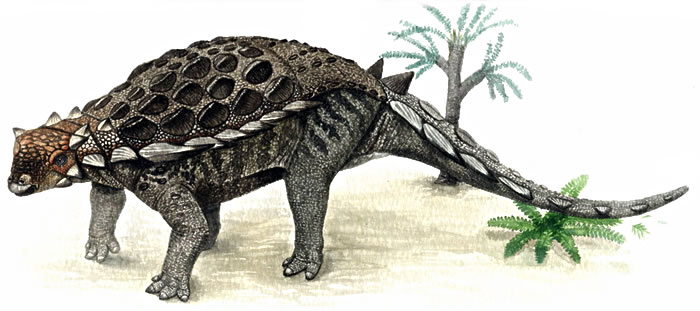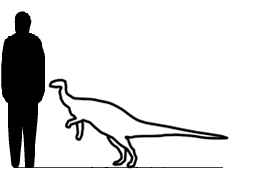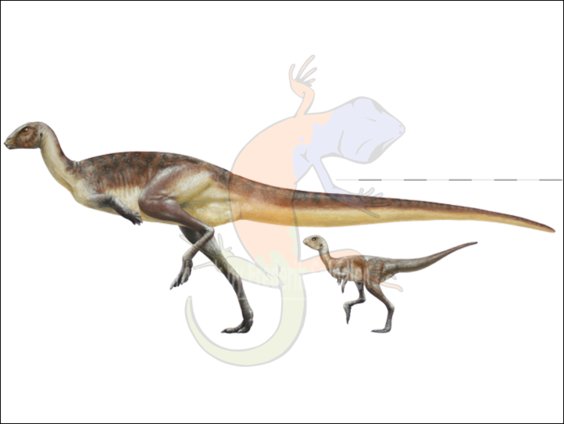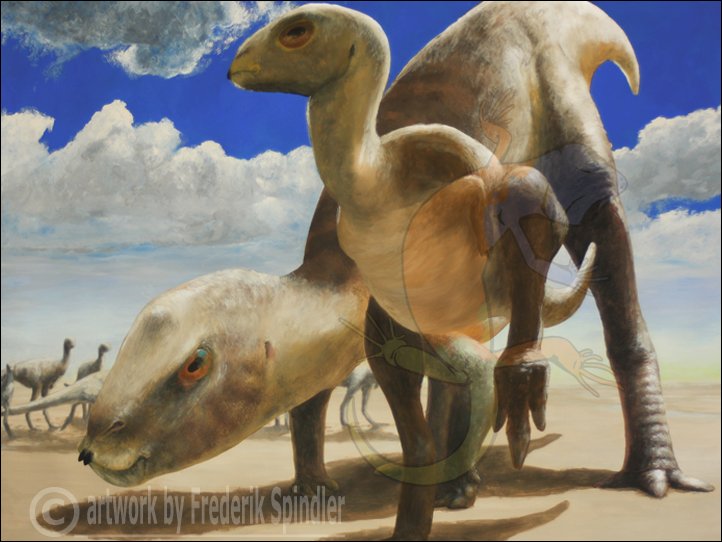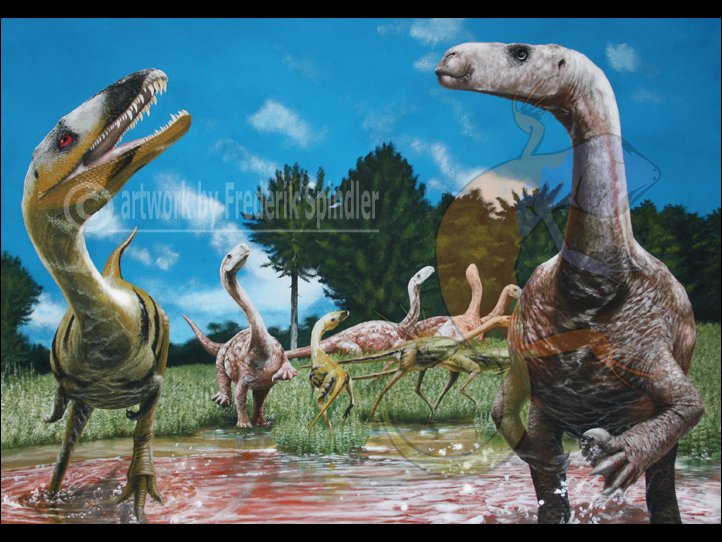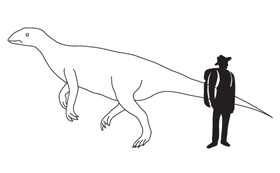[Recent Entries][Archive][Friends][User Info]
Below are 20 entries, after skipping 20 most recent ones in the "Сообщество, посвящённое ра" journal:[<< Previous 20 entries -- Next 20 entries >>]
| November 10th, 2012 | |
|---|---|
| 05:36 pm [industrialterro] [Link] |
Othnielia Othnielia is a genus of ornithischian dinosaur, named after its original describer, Professor Othniel Charles Marsh, an American paleontologist of the 19th century. The taxon, Othnielia rex, was named by Peter Galton in 1977 from a species Marsh (1877) called Nanosaurus rex. Remains assigned to Othnielia have been found in Wyoming, Utah, and Colorado in rocks of the Late Jurassic age (Oxfordian-Tithonian) Morrison Formation, but with Galton's 2007 revision of Morrison ornithischians, the only definite remains are YPM 1875 (the holotype femur of "Nanosaurus" 'rex') and possibly some other associated postcranial bits. He considered the femur undiagnostic and thus Othnielia to be a dubious name, and removed two partial skeletons to the new genus Othnielosaurus. It remains to be seen if this will be widely accepted, but this sort of taxonomic decision has much precedent (for example, Marasuchus versus Lagosuchus). Without the remains now included in Othnielosaurus, this animal is dubious, and can only be described in generalities based on similar animals. It was relatively small for a dinosaur, at around 1.5 to 2 metres (4.9 to 6.6 ft) long, and 10 kilograms (22 lb) in weight, and an agile bipedal herbivore with proportionally small arms and long legs. Only the original holotype of Othnielia and two partial skeletons were specifically dealt with in Galton's paper, leaving unsettled the assignment of several other specimens that have appeared in the literature. Included among these are a nearly complete specimen in the Aathal Museum nicknamed "Barbara", and a dentary (MWC 5822, again referred to O. rex). That Galton considered Othnielia a nomen dubium, means that according to him these other specimens could not be referred to it. Kathleen Brill and Kenneth Carpenter reported a baby ornithopod, possibly Othnielia rex from the Morrison Formation at Garden Park, Colorado. The specimen is speculated to be immature on the basis of its small bones, unfused neural arches, and the ends of its long bones are "spongy and incompletely formed." The specimen is catalogued as DMNH 21716. The skeleton was encased in five blocks of maroon sandstone. If the specimen is truly O. rex, it is about one third the size of a known adult specimen. However, the chronological age of the specimen could not be estimated because Othnielia eggs and hatchlings were unknown.
Ископаемые останки и реплики (1, 2, 3):
Tags: Вымершие рептилии, Юра, авеметатарзалии, архозавроморфы, архозавры, диапсиды, динозавроморфы, динозавры, неорнитискии, птицетазовые |
| November 8th, 2012 | |
| 07:36 pm [industrialterro] [Link] |
Mymoorapelta Mymoorapelta ("Shield of Mygatt-Moore") is an ankylosaur from the Late Jurassic (Kimmeridgian-Tithonian) Morrison Formation (Brushy Basin Member) of western Colorado. The taxon is known from portions of a disarticulated skull, parts of three different skeletons and other postcranial remains. Present in stratigraphic zones 4 and 5 of the Morrison Formation. There is presently some controversy as to this ankylosaur's position within the Ankylosauria. Vickaryous et al. (2004) considered it Ankylosauria incertae sedis, while Kirkland et Carpenter (1994) placed it within the Family Polacanthidae. A new cladistic analysis performed by Thompson et al., 2011 suggests that Mymoorapelta is a basal nodosaurid. To date, only a single species has been named for this taxon, M. maysi. Along with Gargoyleosaurus parkpinorum, Mymoorapelta is one of the earliest known ankylosaurs, providing a look at the early evolution and diversification of this group of dinosaurs.
Ископаемые останки и реплики (1, 2, 3, 4):
Tags: Вымершие рептилии, Юра, авеметатарзалии, анкилозавры, архозавроморфы, архозавры, диапсиды, динозавроморфы, динозавры, нодозавры, полакантины, птицетазовые, тиреофоры |
| November 7th, 2012 | |
| 05:57 pm [industrialterro] [Link] |
Miragaia Miragaia (named after Miragaia, the parish in Portugal and geologic unit where its remains were found) is a genus of stegosaurid dinosaur. Its fossils have been found in Upper Jurassic rocks in Portugal. Miragaia is notable for its long neck, which included at least 17 vertebrae. Miragaia is based on ML 433, a nearly complete anterior half of a skeleton with partial skull (the first cranial material for a European stegosaurid). Among the recovered bones were most of the snout, fifteen neck vertebrae (the first two, which articulated with the skull, were absent), the shoulder bones, most of the forelimbs, and thirteen bony plates. ML 433 was found in the Miragaia Unit of the Sobral Formation, Lourinhã Group, which dates to the late Kimmeridgian-early Tithonian (Late Jurassic, approximately 150 million years ago). Octávio Mateus and colleagues described Miragaia in 2009. The type species is M. longicollum ("long neck"). A partial hip and partial vertebrae from a juvenile individual (ML 433-A) were found at the same location, and were also assigned to M. longicollum. Mateus and colleagues performed a phylogenetic analysis and found Miragaia to group with Dacentrurus in a clade Dacentrurinae, the sister group to Stegosaurus. The most notable feature of Miragaia is its long neck, which was composed of at least 17 vertebrae. This represents the culmination of a trend of longer necks seen in stegosaurians. Additionally, Miragaia had more neck vertebrae than most sauropods, dinosaurs known for their long necks, which contrasts with the traditional view of stegosaurians as low browsers with short necks. Only the Chinese sauropods Euhelopus, Mamenchisaurus, and Omeisaurus had as many neck vertebrae as Miragaia, with most sauropods of the Late Jurassic possessing only 12 to 15. Mateus and colleagues suggested that the long neck either allowed Miragaia to browse at a level that other herbivores were not exploiting, or that the neck arose due to sexual selection. In sauropods, great neck length was achieved by a combination of three processes: incorporation of back vertebrae into the neck; addition of new vertebrae; and lengthening of the individual neck vertebrae. The long neck of Miragaia appears to have resulted mostly from back vertebrae becoming incorporated into the neck, based on vertebral counts of other stegosaurians. There is currently no evidence that new vertebrae contributed to the neck; instead, the distribution of existing vertebrae in the back and neck changed. There is some evidence for increasing vertebral length in Miragaia and Stegosaurus, but this is equivocal and could be due to post-mortem distortion. The tip of the beak was toothless, as in Stegosaurus. Both the upper arm and ulna and radius (lower arm bones) are also comparable to those of Stegosaurus. The ribs of the neck vertebrae were fused to the vertebrae. In the pelvis, the pubic bone had an expanded tip, as seen in Dacentrurus. Paired triangular plates ran down the midline of the back. Its total length is estimated at 5.5 – 6 metres (18-20 ft).
Репродукции (1, 2, 3, 4, 5, 6, 7, 8, 9, 10):
( Read More ) Размеры тела в сравнении с человеком:
Ископаемые останки и реплики (1, 2, 3):
Tags: Вымершие рептилии, Юра, авеметатарзалии, архозавроморфы, архозавры, диапсиды, динозавроморфы, динозавры, птицетазовые, стегозавриды, стегозавры, тиреофоры |
| November 5th, 2012 | |
| 06:46 pm [industrialterro] [Link] |
Lycorhinus Ликоринус (λυκος — волк и ρινχος — нос) — растительноядный динозавр юрского периода. Питался ликоринус растительной пищей, хотя на верхней и нижней челюстях у него росли зубы, наподобие крупных клыков, характерных для плотоядных животных. Возможно, клыки служили этому маленькому динозавру средством защиты от хищников, для которых он мог стать легкой добычей. Лишенным зубов клювом ликоринус отщипывал побеги и жевал их тупоконечными зубами. Ликоринус известен с 1924 года. Именно тогда была найдена его левая челюсть, и из-за наличия клыков палеонтологи приняли его за примитивную рептилию с чертами млекопитающего. Но после находки в 1962 году гетеродонтозавра было выявлено их близкое родство, и в итоге ликоринус был отнесен к динозаврам. Lycorhinus is a genus of heterodontosaurid ornithischian dinosaur hailing from the Early Jurassic (Hettangian to Sinemurian ages) strata of the Elliot Formation located in the Cape Province, South Africa. The fossil material consists of dentaries and maxillae, hence the characters mentioned by the name Lycorhinus angustidens that Sidney H. Haughton attributed to the remains in 1924, where the generic name means "wolf snout", as it was at first misidentified as a cynodont, and the specific descriptor means "constricted tooth". The holotype, SAM 3606, consists of a mandible found by Dr M. Ricono. Three other species of Lycorhinus have been named. Lycorhinus parvidens was created by Robert Broom and Lycorhinus tucki by Richard Anthony Thulborn in 1970 renaming Heterodontosaurus tucki, but these have failed to find recognition. Lycorhinus consors, named by Thulborn in 1974, was renamed Abrictosaurus by James Hopson in 1975. Lycorhinus, including the remains described by Gow in 1975 as Lanasaurus, is a small (1.2 metres (47 in) in length) herbivorous dinosaur despite the long canines it sported in its jaws; in view of this typical characteristic L. angustidens is very clearly allied to Heterodontosaurus. Only in 1962 Alfred Walter Crompton recognised it was an ornithischian dinosaur. Thulborn in 1971 created a separate Lycorhinidae but this group was in 1972 equated with Heterodontosauridae by Peter Galton. The type and only species of Lanasaurus is L. scalpridens, described by Christopher Gow in 1975 from the same horizon as Lycorhinus. The generic name is derived from Latin lana, "wool" and Greek saurus, "lizard", and honours Professor Alfred Walter Crompton, nicknamed "Fuzz" because of his woolly hair. The specific name is derived from Latin scalprum, "chisel", and dens, "tooth". It is based on a partial upper jaw bone, the maxilla, holotype BP/1/4244, found in the Upper Elliot Formation of Free State. The teeth show a typical replacement pattern in which during each replacement cycle every third tooth is renewed. Gow himself in 1990 concluded that the holotype of Lanasaurus was actually a specimen of Lycorhinus angustidens. This has been commonly accepted since
Tags: Вымершие рептилии, Юра, авеметатарзалии, архозавроморфы, архозавры, гетеродонтозавры, диапсиды, динозавроморфы, динозавры, птицетазовые |
| November 1st, 2012 | |
| 07:27 pm [industrialterro] [Link] |
Lexovisaurus Lexovisaurus was one of the first dinosaurs from mid-to-Late Jurassic Europe, 164.7 mya to be discovered. It was a stegosaur. Its fossils (pieces of armor and limb bones) have been found in France and northern England. The French specimens show that Lexovisaurus was probably rather like Stegosaurus. Traditionally, this dinosaur was depicted as having either large spines over the hips or shoulders, with a selection of flat plates and round pointed spines that ran along the back and tail. Lexovisaurus was probably about 5 m (16.5 ft) long. The type specimen, Lexovisaurus durobrivensis, was formalized by Hoffstetter in 1957. The specimen was originally placed in Omosaurus (now Dacentrurus) 70 years earlier. Recent work by Susannah Maidment and colleagues indicates that Lexovisaurus is based on undiagnostic remains, so these workers coined Loricatosaurus to hold other remains that had been assigned to Lexovisaurus.
Размеры тела в сравнении с человеком:
Tags: Вымершие рептилии, Юра, авеметатарзалии, архозавроморфы, архозавры, диапсиды, динозавроморфы, динозавры, птицетазовые, стегозавры, тиреофоры |
| 06:26 pm [industrialterro] [Link] |
Lesothosaurus Лесотозавр (Lesothosaurus diagnosticus, «ящер из Лесото») — примитивный птицетазовый динозавр из нижней юры (верхнего триаса?) Лесото. Этот род пока плохо изучен, но уже ясны некоторые подробности его анатомии, что даёт представление о других фаброзавридах. Длина животного не превышала 1 м. Передвигался лесотозавр на двух лапах. Передние лапы были укорочены и приспособлены для обхватывания. У лесотозавра были пятипалые передние конечности и относительно крупная голова, что показывало что лесотозавр — примитивный птицетазовый динозавр. Lesothosaurus is an herbivorous ornithischian dinosaur. It was named by paleontologist Peter Galton in 1978, the name meaning "lizard from Lesotho". The genus is monotypic, having only one valid species, Lesothosaurus diagnosticus, within the genus. Lesothosaurus was originally considered an ornithopod. However, more recent work by Paul Sereno has suggested that it may actually represent one of the most primitive of all known ornithischian dinosaurs. The taxonomic history of Lesothosaurus is complex and it has long been confused with Fabrosaurus, another small ornithischian from the same locality. In 2005, Richard J. Butler published a new phylogenetic study of ornithischians, in which he proposed that Lesothosaurus was a basal member of the clade Neornithischia, which includes pachycephalosaurs, ceratopsians and ornithopods. Alternatively, this dinosaur may be a very early thyreophoran, a member of the group including the armored stegosaurians and ankylosaurians. Stormbergia may represent the adult form of Lesothosaurus. Lesothosaurus was a 1 metre (3.3 ft) long, bipedal plant-eater. Its long legs, small arms, and slender tail all suggest that it was a fast runner; it would have resembled a large lizard walking bipedally. The small skull of Lesothosaurus was short and flat, with large eye sockets. It had large cavities for the eye and jaw muscles. It had a short, pointed snout, and the lower jaw may have ended in a beak. Its teeth were pointed with grooved edges, and would have been ideal for chewing tough plant matter. The skull was mounted on a short but flexible neck. The hind limbs of Lesothosaurus were much longer than the forelimbs, which were quite short with small 'hands'. The hand had four well-developed fingers and a smaller fifth finger. The length of the rear legs indicates Lesothosaurus was a fast, agile runner. The distinctive femur has a unique femoral head not seen in other dinosaurs. Lesothosaurus lived in the hot, arid conditions of Lesotho and South Africa, during the Early Jurassic. Remains of Lesothosaurus have been collected from the Upper Elliot Formation, dating it to the Hettangian to Sinemurian portions of the Early Jurassic. ( Read More )
Размеры тела в сравнении с человеком и курицей:
Tags: Вымершие рептилии, Юра, авеметатарзалии, архозавроморфы, архозавры, диапсиды, динозавроморфы, динозавры, птицетазовые |
| October 25th, 2012 | |
| 09:01 pm [industrialterro] [Link] |
Kentrosaurus Кентрозавр (др.-греч. κέντρον «стрекало, жало, острие» и σαῦρος «ящерица») — род позднеюрских травоядных динозавров, живщий на Земле 155,7—150,8 млн лет назад. Включает один вид сравнительно небольших представителей семейства стегозаврид. Кентрозавры передвигались на четырёх конечностях, но, вероятно, могли вставать на задние лапы, дотягиваясь за пищей до высоких веток. Голова маленькая, мозговая полость в черепе не более 6 см. Длина выставленного в берлинском Музее естественной истории им. Гумбольдта экземпляра 4,5 м, высота 1,5 м, но отдельные найденные кости, позволяют предполагать, что кентрозавры могли достигать 5,5 м. Хвост, состоящий из 40 позвонков, составляет чуть больше половины длины тела. Вдоль всего тела от головы до кончика хвоста тянулись два ряда костных образований, которые служили защитой от хищников. На шее и передней части туловища шли плоские и широкие пластины, аналогичные пластинам стегозавра, далее до конца хвоста, все более длинные копьеобразные шипы. Гибкий хвост, в сочетании с расположенными на нём шипами, вероятно, представлял грозное оружие обороны. На плечах животного находилась дополнительная пара торчащих в стороны длинных шипов. Строение челюстей кентрозавра плохо приспособлено для жевания, вероятно животные заглатывали пищу большими порциями, не пережевывая её. Вероятно, функцию измельчения пищи брали на себя гастролиты — камни, которые некоторые рептилии, птицы и динозавры заглатывали для этой цели. Однако, в случае с кентрозавром, гастролиты найдены не были. Останки кентрозавра были обнаружены германскими учеными в ходе Восточно-Африканской экспедиции в Таньганьику (современная Танзания) в 1909 году. В 1910 году руководивший экспедицией палеонтолог и геолог Вернер Яненш предположил, что это останки неизвестного представителя стегозаврид, а в 1915 году принимавший участие в экспедиции палеонтолог Эдвин Хенниг (Edwin Hennig) описал этот новый вид. В течение четырёх полевых сезонов было собрано около 1200 костей этого динозавра, но полного скелета обнаружить не удалось. Несмотря на это, найденные фрагменты, где кости и даже защитные кожные шипы находились в естественном сочленении, позволили точно восстановить внешний облик кентрозавров и собрать два скелета. Один полный скелет был установлен в 1925 году в берлинском Музее естественной истории им. Гумбольдта (Museum für Naturkunde). В 2006 году он был разобран и смонтирован в несколько измененной позе, что более соответствует современным представлениям о физиологии этих животных. Другой (неполный) скелет, находится в геологическом музее Тюбингенского университета Эберхарда Карла. Из собранных экспедицией костей кентрозавра большая часть погибла во время Второй мировой войны. Род включает только один вид Kentrosaurus aethiopicus, обнаруженный в позднеюрской свите Тендагуру (Tendaguru formation). Найденные в 1914 году Чарльзом Гилмором (Charles W. Gilmore) в Вайоминге фрагменты динозавра Stegosaurus longispinus, были предложены как североамериканский род кентрозавров. Но это гипотеза не нашла поддержки у большинства специалистов. ( Read more ) Репродукции (1, 2, 3, 4, 5, 6, 7, 8, 9, 10, 11, 12, 13):
( Read more ) Размеры тела в сравнении с человеком:
Ископаемые останки (1, 2, 3, 4, 5, 6, 7, 8):
( Read more ) Tags: Вымершие рептилии, Юра, авеметатарзалии, архозавроморфы, архозавры, диапсиды, динозавроморфы, динозавры, птицетазовые, стегозавриды, стегозавры, тиреофоры |
| October 24th, 2012 | |
| 08:47 pm [industrialterro] [Link] |
Huayangosaurus Huayangosaurus is a genus of stegosaurian dinosaur from the Middle Jurassic of China. The name derives from "Huayang", an alternate name for Sichuan (the province where it was discovered), and "saurus", meaning "lizard". It lived during the Bathonian to Callovian stages, around 165 million years ago, some 20 million years before its famous relative, Stegosaurus appeared in North America. At only 4.5 metres long, it was also much smaller than its famous cousin. Found in the Lower Shaximiao Formation, Huayangosaurus shared the local Middle Jurassic landscape with the sauropods Shunosaurus, Datousaurus, Omeisaurus and Protognathosaurus, the ornithopod Xiaosaurus and the carnivorous Gasosaurus. Like other stegosaurians, Huayangosaurus was a quadrupedal herbivore with a small skull and a spiked tail. Like its more famous relative, Stegosaurus, Huayangosaurus bore the distinctive double row of plates that characterize all the stegosaurians. These plates rose vertically along its arched back. In Huayangosaurus, the plates were more spike-like than in Stegosaurus. Like Stegosaurus, however, it bore two pairs of long spikes extending horizontally near the end of its tail. Huayangosaurus was one of the smallest known stegosaurians, at just 4.5 meters (15 feet) in length. Huayangosaurus remains from twelve individual animals were recovered from the Dashanpu Quarry near Zigong in Sichuan, and named by Dong, Tang, and Zhou in 1982. The type species is H. taibaii. As it is the most basal stegosaurian, it is placed in within its own family Huayangosauridae. It is also morphologically distinct from later (stegosaurid) forms. Its skull was broader and had premaxillary teeth in the front of its mouth. All later stegosaurians lost these teeth. Like many other stegosaurians, it had plates all down its back and spikes on its tail. Two large spikes were above its hips, and may have been used for deterring an attack from above (considering as it was a fairly short in height compared to later stegosaurians). Its plates were smaller than those of Stegosaurus, with much less surface area. Thus they would have been much less effective heat regulators, one of the postulated functions of plates. Специалисты еще не до конца изучили найденные скелеты этого броненосного китайского динозавра. Завершив исследования, ученые будут знать о нем больше. Один из древнейших стегозавров — хуаянгозавр был самым мелким представителем своего семейства: его рост, считая от бедер, составлял 1,8 м — под стать человеку, зато весил он добрую тонну. Вполне возможно, что он был предком более поздних стегозавров. Этот примитивный стегозаврид известен по полным скелетам взрослых животных, найденным в карьерах Дашаньпу (Китай) в начале 80-х годов XX века. Он был заново описан в 1992 году. Расположение зубов и тот факт, что его передние ноги слишком длинны для стегозаврида, настолько отдаляют его от более поздних стегозаврид, что он считается представителем отдельного семейства. У хуаянгозавра двойной ряд сердцевидных пластин на шее, сменяющихся длинными, узкими, похожими на шипы пластинами на спине. К хвосту они уменьшаются и примерно на середине его сходят на нет. Кончик хвоста снабжен двумя парами шипов. Зубы расположены в передней части пасти - черта, отсутствующая у более поздних стегозаврид. Также есть пара рожек возле глаз.
Репродукции (1, 2, 3, 4, 5, 6, 7, 8):
( Read more ) Ископаемые останки (1, 2, 3, 4):
Tags: Вымершие рептилии, Юра, авеметатарзалии, архозавроморфы, архозавры, диапсиды, динозавроморфы, динозавры, птицетазовые, стегозавры, тиреофоры |
| 08:36 pm [industrialterro] [Link] |
Hexinlusaurus Hexinlusaurus is a genus of basal ornithischian dinosaur from the Middle Jurassic of China. The holotype (ZDM T6001, Zigong Dinosaur Museum, Dashanpu, People's Republic of China), consists of an almost complete, articulated skull and some postcranial material, collected from a terrestrial sandstone within the Lower Shaximiao Formation (Bajocian) at the famous dinosaur-bearing quarries at Dashanpu. A paratype (ZDM T6002) consists of a partial skull and postcranial remains. Previously, it had been described as a species of Yandusaurus, Y. multidens (He and Cai, 1983), but was reclassified as a new taxon by Paul M. Barrett, Richard J. Butler and Fabien Knoll in 2005, who diagnosed this anatomically conservative species as follows: "A small ornithischian dinosaur distinguished from all other basal ornithischians by a single autapomorphy, the presence of a marked concavity that extends over the lateral surface of the postorbital." The etymology of the genus name honors Professor He Xin-Lu (Chengdu University of Technology) who originally named the specimen as Y. multidens + the Greek sauros (=lizard). Hexinlusaurus was a small, fleet-footed herbivore. Other dinosaurs known from Dashanpu include the sauropod Shunosaurus, the theropod Gasosaurus, and the stegosaur Huayangosaurus. Before being officially named Hexinlusaurus, this genus was briefly known under the informal name "Proyandusaurus". This name originally appeared in an abstract attributed to Fabien Knoll, which was apparently published without his consent.
Tags: Вымершие рептилии, Юра, авеметатарзалии, архозавроморфы, архозавры, диапсиды, динозавроморфы, динозавры, неорнитискии, птицетазовые |
| 07:29 pm [industrialterro] [Link] |
Heterodontosaurus Гетеродонтозавр (Heterodontosaurus) — род динозавров из нижней юры Южной Африки. Типовой вид — H. tuki — происходит из геттангия. Гетеродонтозавр является орнитискией. Принадлежит к семейству Heterodontosauridae. Длина тела гетеродонтозавра составляла 120 см. Таз узкий. На каждой передней конечности было по 5 пальцев, причём 2 из них отставлены в сторону. Эта особенность, возможно, использовалась для захвата добычи. Самой удивительной чертой гетеродонтозавра были дифференцированные зубы. Верхние резцы срезали растительность, а задние зубы измельчали её. Назначение клыков остаётся непонятным. Возможно они использовались для устрашения соперников в ходе брачных турниров. У самцов клыки были больше, чем у самок. Ещё одна гипотеза утверждает, что с помощью клыков гетеродонтозавр отпугивал хищников - демонстрируя им свои клыки, этот динозавр мог казаться более опасным, чем был на самом деле. Если устрашение не помогало, динозавр спасался бегством. Особенности строения зубов гетеродонтозавров вызывают споры среди учёных. Одни учёные считают, что гетеродонтозавр — существо исключительно растительноядное. Другие же считают, что клыками гетеродонтозавр мог подцеплять мелких животных, и, следовательно, мог быть всеядным. Heterodontosaurus (meaning "different toothed lizard") is a genus of small herbivorous dinosaur with prominent canine teeth which lived in the Early Jurassic of South Africa. It was similar to a hypsilophodont in shape, and ate plants, despite its canines. Heterodontosaurus is currently known from specimens of the SAFM (South African Museum) from South Africa. There are two known morphologies of this genus, the second of which is thought by some to represent a different species. The type species, H. tucki, is from the Upper Elliot Formation of the Hettangian age, around 199-196 million years ago. Heterodontosaurus was a small, fleetfooted ornithischian that reached a maximum size of about 3 feet. It had a long, narrow pelvis and a pubis which resembled those possessed by more advanced ornithischians. More unusual was that the hand of Heterodontosaurus had five fingers, two of which seem to be opposable. This configuration allowed Heterodontosaurus to grasp and manipulate food. The bone in the foot and ankle were fused in a manner reminiscent of those in birds Another interesting feature is the specialization of teeth which gave rise to the animal's name. Most dinosaurs (and indeed most reptiles) have a single type of tooth in their jaws, while Heterodontosaurus had three. At the front of the jaw beside the beak were small teeth likely used for chopping off leaves and stems. Next in the jaw was a large pair of tusks whose purpose is unknown, but it is speculated that they were used as sexual displays (where the tusks could have been used as weapons by rival males in disputes over mates and territories) or to break open prehistoric termite mounds. The final type of teeth were tall and squared off. This type of teeth was well adapted for chewing. Fleshy cheeks helped keep the food in the mouth while chewing occurred. Chewing is relatively common in dinosaurs, but uncommon for other groups of reptiles. This bizarre suite of teeth has led to debate over what heterodontosaurs ate. Some scientists think heterodontosaurs were omnivores who used their differently-shaped teeth to eat both plants and small animals. ( Read more ) Репродукции (1, 2, 3, 4, 5, 6, 7, 8):
( Read more ) Размеры тела в сравнении с человеком:
Ископаемые останки (1, 2, 3, 4, 5, 6, 7):
( Read more ) Tags: Вымершие рептилии, Юра, авеметатарзалии, архозавроморфы, архозавры, гетеродонтозавры, диапсиды, динозавроморфы, динозавры, птицетазовые |
| October 23rd, 2012 | |
| 08:45 pm [industrialterro] [Link] |
Hesperosaurus Hesperosaurus (meaning "western lizard", from Classical Greek, ἕσπερο-/hespero- "western" and σαυρος/saurus "lizard") was a herbivorous dinosaur from the Kimmeridgian to Tithonian epochs of the Jurassic period (approximately 150 million years ago), whose fossils are found in the state of Wyoming in the United States of America. It is from an older part of the Morrison Formation, and so a little older than other Morrison Stegosaurs. Hesperosaurus was a type of stegosaurid, having alternating plates on its back and four spikes on its tail. The plates on its back were not as tall, but were longer, than in its cousin Stegosaurus. It had a shorter, broader skull than Stegosaurus and appears most closely related to Dacentrurus. It was described in 2001 by Kenneth Carpenter and colleagues, who took the name for its location in the western United States. A nearly complete skull and much of the skeleton was found. The only species known is Hesperosaurus mjosi. It is present in stratigraphic zone 1 of the Morrison Formation. Susannah Maidment and colleagues proposed in 2008 that Hesperosaurus should be considered a synonym of Stegosaurus, with H. mjosi becoming Stegosaurus mjosi.
Размеры тела в сравнении с человеком:
Tags: Вымершие рептилии, Юра, авеметатарзалии, архозавроморфы, архозавры, диапсиды, динозавроморфы, динозавры, птицетазовые, стегозавриды, стегозавры, тиреофоры |
| October 22nd, 2012 | |
| 08:13 pm [industrialterro] [Link] |
Gigantspinosaurus Gigantspinosaurus (meaning "giant-spined lizard") is a genus of herbivorous ornithischian dinosaur from the Late Jurassic. It was a stegosaur found in Sichuan, China. The first fossil was found in 1985 by Ouyang Hui at Pengtang near Jinquan and was reported upon in 1986 by Gao Ruiqi and colleagues, mistaking it for a specimen of Tuojiangosaurus. The type species, Gigantspinosaurus sichuanensis, was described and named by Ouyang in 1992 in an abstract of a lecture. The generic name is derived from Latin gigas or giganteus, "enormous", and spina, "spine", in reference to the gigantic shoulder spines. The specific name refers to Sichuan. The name was generally considered a nomen nudum in the West, until in 2006 it was disclosed that the abstract contained a sufficient description. Despite its uncertain nomenclatural status, images of Gigantspinosaurus had appeared in several sources. Public awareness of this animal was increased in early 2006 when Tracy Ford, considering it a validly established taxon, published a short article on reconstructing it. Ford suggested that earlier reconstructions of Gigantspinosaurus attached the shoulder spines upside-down, and his new reconstruction shows the spine extending somewhat upwards, ending higher than the top of the animal's back. Susannah Maidment and Wei Guangbiao in 2006 concluded that G. sichuanensis was a valid taxon in their review of Late Jurassic Chinese stegosaurs, but did not redescribe it because at that time it was under study by Zigong Dinosaur Museum staff. In fact, a Chinese redescription by Peng Guangzhao and colleagues in 2005 would predate Maidment's publication. The holotype, ZDM 0019, was found in layers of the Upper Shaximiao Formation of Zigong (Sichuan province), which date to the Oxfordian. It consists of a partial skeleton of a probably subadult individual missing the skull (though the lower jaws are present), hind feet, and the tail end. Apart from skeletal elements also plates, spines and scutes have been found. At the left shoulder an impression of the skin had been preserved. The specimen is part of the collection of the Zigong Dinosaur Museum and has as a mounted restored skeleton been on display since 1996. In 2005 Peng e.a. reported a second specimen, ZDM 0156, a pelvis found at Chenjia near Fuquan. Gigantspinosaurus was described by Peng and colleagues as a "medium-sized stegosaur". It was estimated by Gregory S. Paul in 2010 to have been about 4.2 metres (14 ft) long and 700 kilograms (1,500 lb) in weight. Gigantspinosaurus has a distinctive appearance with relatively small dorsal plates and greatly enlarged shoulder spines, spinae parascapulares, twice the length of the shoulder blades on which they rested via large flat bases. The plates on the neck are small and triangular. The head must have been relatively large with thirty teeth in each lower jaw. The hips are very broad and the low neural spines of the four sacral vertebrae and the first tail vertebra have been fused into a single plate. The forelimbs are robust. The skin impressions were described by Xing Lida and colleagues in 2008. They cover a surface of 414 square centimetres (64.2 sq in) and show rosettes with a central pentagonal or hexagonal scale surrounded by thirteen to fourteen ridged smaller square, pentagonal or hexagonal scales with a diameter of 5.7 to 9.2 millimetres (0.22 to 0.36 in). A study by Maidment indicated that Gigantspinosaurus is the most basal known member of the Stegosauria. Peng and colleagues, however, placed it in the Huayangosaurinae.
Репродукции (1, 2, 3, 4, 5, 6, 7):
Размеры тела в сравнении с человеком:
Tags: Вымершие рептилии, Юра, авеметатарзалии, архозавроморфы, архозавры, диапсиды, динозавроморфы, динозавры, птицетазовые, стегозавры, тиреофоры |
| October 21st, 2012 | |
| 06:38 pm [industrialterro] [Link] |
Gargoyleosaurus Gargoyleosaurus (meaning "gargoyle lizard") is one of the earliest ankylosaurs known from reasonably complete fossil remains. Its skull measures 29 centimetres (11 in) in length, and its total body length is an estimated 3 to 4 metres (9.8 to 13 ft). It may have weighed as much as 1 tonne (2,200 lb). The holotype was discovered at the Bone Cabin Quarry West locality, in Albany County, Wyoming in exposures of the Upper Jurassic (Kimmeridgian to Tithonian stages) Morrison Formation. The type species, G. parkpinorum (originally G. parkpini) was described by Ken Carpenter et al. in 1998. A mounted skeletal reconstruction of Gargoyleosaurus parkpinorum can be seen at the Denver Museum of Nature and Science. Gargoyleosaurus was present in stratigraphic zone 2 of the Morrison Formation. The holotype specimen of Gargoyleosaurus parkpinorum was collected by Western Paleontology Labs in 1996 and is currently held in the collections of the Denver Museum of Nature and Science, Denver, Colorado. Besides the holotype, two other partial skeletons are known (although not yet described). The holotype consists of most of the skull and a partial postcranial skeleton. The specimen was originally described as Gargoyleosaurus parkpini by Carpenter, Miles and Cloward in 1998, then renamed G. parkpinorum by Carpenter et al. in 2001, in accordance with ICZN art. 31.1.2A. Much of the skull and skeleton has been recovered, and the taxon displays cranial sculpturing, including pronounced deltoid quadratojugal and squamosal bosses. The taxon is further characterized by a narrow rostrum (in dorsal view), the presence of seven conical teeth in each premaxilla, an incomplete osseous nasal septum, a linerarly arranged nasal cavity, the absence of an osseus secondary palate, and, as regards osteoderms, two sets of co-ossified cervical plates and a number of elongate conical spines. Vickaryous et al. (2004) place Gargoyleosaurus parkpinorum within the Family Ankylosauridae of the Ankylosauria and are in agreement with most previous phylogenetic hypotheses, which place the genus as the sister group to all other ankylosaurids (i.e., members of the Ankylosauridae). These studies however, only utilized the skull, whereas many of the distinctive features of the family Polacanthidae are in the postcranial skeleton. Анкилозавры (Ankylosauria — «согнутый ящер») — инфраотряд наземных динозавров отряда птицетазовых, характерной особенностью которых является костные образования на туловище. Передвигались на четырёх конечностях, питались растениями. Тело анкилозавров покрывал панцирь, состоящий из сросшихся костных щитков, шипов или спинных поясов, а на хвосте имелся костный вырост, который использовался для самозащиты. Жили анкилозавры в юрском и раннем меловом периодах на территории современных Европы, Северной Америки и Центральной Азии, в меловом периоде в Австралии и Антарктиде. В России обнаружены в верхнем мелу Амурской области. Нодозавриды (Nodosauridae) — семейство динозавров отряда птицетазовых, которые жили в период с позднего юрского и до конца мелового периода на территории современных Северной Америки, Азии, Австралии, Антарктиды и Европы. Семейство выделено в 1890 году Чарльзом Маршем и названо по типовому роду нодозавр (Nodosaurus). Одни из первых ископаемые нодозаврид, частичные останки левой лопатки (голотип USNM 8571) и несколько остеодермов (голотипы 8610 USNM, 8611) были отнесены к Scelidosauridae по Гилмор (1919); позднее останки лопатки были отнесены к роду Panoplosaurus (Lehman, 1981). В 2000 году Форд, основаясь на голотипе USNM 8610 поместил род Glyptodontopelta в новое подсемейство "Stegopeltinae" с Aletopelta и Stegopelta. Бернс (2008), в обзоре остеодермов анкилозавров, подтвердил законность Glyptodontopelta. Он поместил ее в семейство Nodosauridae, что делает подсемейство "Stegopeltinae" двусмысленным, из-за неопределенных сходств с Aletopelta. Исследования ученых показали, что нодозавриды произошли от общего предка тиреофоров. На сегодняшний день базальным членом данной группы является Antarctopelta, жившая около 74-70 млн лет назад. Однако одним из самых ранних нодозаврид является Sauropelta, жившая около 115 млн лет назад. В 2011 году был описан вид Propanoplosaurus marylandicus, который являетсяя единственным нодозавридом из раннего мела в восточной части США и является первым прямым доказательством того, что нодозавриды гнездовались на всем восточном побережье. Polacanthinae is a grouping of ankylosaurs, possibly primitive nodosaurids. Polacanthines are late Jurassic to early Cretaceous in age, and Kirkland observed they appeared to become extinct about the same time a land bridge opened between Asia and North America. Polacanthines were somewhat more lightly armoured than more advanced ankylosaurids and nodosaurids. Their spikes were made up of thin, compact bone with less reinforcing collagen than in the heavily armoured nodosaurids. The relative fragility of polacanthine armour suggests that it may have been as much for display as defense. The family Polacanthidae was named by Wieland in 1911 to refer to a group of ankylosaurs which seemed to him intermediate between the ankylosaurids and nodosaurids. This grouping was ignored by most researchers until the late 1990s, when it was used as a subfamily (Polacanthinae) by Kirkland for a natural group recovered by his 1998 analysis suggesting that Polacanthus, Gastonia, and Mymoorapelta were closely related within the family Ankylosauridae. Kenneth Carpenter resurrected the name Polacanthidae for a similar group which he also found to be closer to ankylosaurids than to nodosaurids. Carpenter became the first to define Polacanthidae as all dinosaurs closer to Gastonia than to either Edmontonia or Euoplocephalus. Most subsequent researchers placed polacanthines as primitive ankylosaurids, though mostly without any rigorous study to demonstrate this idea. The first comprehensive study of 'polacanthid' relationships, published in 2012, found that they are either an unnatural grouping of primitive nodosaurids, or a valid subfamily at the base of Nodosauridae.
Это преувеличение истинного размера тела животного. Размеры тела в сравнении с человеком:
Ископаемые останки (1, 2, 3, 4):
Tags: Вымершие рептилии, Юра, авеметатарзалии, анкилозавры, архозавроморфы, архозавры, диапсиды, динозавроморфы, динозавры, нодозавры, полакантины, птицетазовые, тиреофоры |
| 01:57 pm [industrialterro] [Link] |
Fruitadens Fruitadens is a genus of heterodontosaurid dinosaur. The name means "Fruita tooth", in reference to Fruita, Colorado (USA), where its fossils were first found. It is known from partial skulls and skeletons from at least four individuals of differing biological ages, found in Tithonian (Late Jurassic) rocks of the Morrison Formation in Colorado. Fruitadens is the smallest known ornithischian dinosaur, with young adults estimated at 65 to 75 cm (26 to 30 in) in length and 0.5 to 0.75 kg (1.1 to 1.7 lb) in weight. It is interpreted as an omnivore and represents one of the latest-surviving heterodontosaurids. Fruitadens is known from fossils recovered under a valid paleontological permit in the 1970s and 1980s by teams led by George Callison, for the Natural History Museum of Los Angeles County (LACM). The discovery area, on lands managed by the Bureau of Land Management, is known as the Fruita Paleontological Area; the specimens were found there in sandstones of the Brushy Basin Member. Roughly equivalent beds have been dated to 150.3 ± 0.3 million years old and 150.2 ± 0.5 million years old, indicating an early Tithonian age. The fossils now named Fruitadens were first thought to belong to a fabrosaurid similar to Echinodon, a genus from the Early Cretaceous of England; Fabrosauridae at the time was considered a general group of primitive ornithopods, and Echinodon itself had not yet been reclassified as a heterodontosaurid. Fruitadens, although not formally described for a number of years, was briefly described in several works, usually as a relative of Echinodon or a new species of the genus. Formal description came in January 2010, by Richard Butler and colleagues (though the paper was published online before print in late 2009). The type species is F. haagarorum, in recognition of support provided by Paul Haaga Jr., Heather Haaga, Blythe Haaga, Paul Haaga III, and Catalina Haaga for the Natural History Museum of Los Angeles County. Fruitadens is based on LACM 115747, consisting of incomplete jaws, a number of vertebrae, and partial hind limbs, of a nearly fully grown individual. At least three other individuals have been found. LACM 115727 is another nearly fully grown individual, known from vertebrae and hind limb bones. This individual was about the same size as LACM 115747, and was five years old at death. LACM 120478 consists of the upper arm and most of the left leg of a juvenile, in its second year. Finally, LACM 128258 includes partial jaws and vertebrae of another juvenile. The largest individuals are estimated to have been about 65 to 75 cm (26 to 30 in) long and 0.5 to 0.75 kg (1.1 to 1.7 lb) in weight. This makes Fruitadens the smallest known ornithischian and comparable in size to the smallest known dinosaurs, outside of birds. Known material of Echinodon and Tianyulong, related heterodontosaurids, comes from similar-sized individuals, but it is not known how old they were upon death. Fruitadens was similar to Heterodontosaurus in anatomy, with relatively short arms and long distal sections of the legs (feet and shins). The lower jaws had an enlarged canine-like tooth, with a corresponding gap in the upper jaw. Unlike Echinodon, there wasn't an enlarged tooth in the upper jaw. Uniquely, a small peg-like tooth was present in front of the canine-like tooth. Replacement teeth were present in the jaws, unlike most other heterodontosaurids. The hind limb bones were hollow, like those of small theropod dinosaurs. Fruitadens seems to have been more closely related to Heterodontosaurus than Echinodon, which was closer in time. The four individuals were found in localities at the base of the Morrison Formation's Brushy Basin Member, in crevasse splay sandstones deposited in floodplains. The Fruita localities preserved a contemporaneous fauna including snails, clams, crayfish, various insects (represented by trace fossils), the lungfish Ceratodus, ray–finned fish, the turtle Glyptops, rhynchocephalian reptiles Eilenodon and Opisthias, several genera of lizards, a mesosuchian crocodylomorph, and the mammals Fruitafossor, Glirodon, and Priacodon. Disarticulated dinosaur fossils are common in the area. Fruitadens was probably bipedal and cursorial, and is suggested to have been omnivorous. Like Echinodon and Tianyulong, other late-surviving heterodontosaurids, Fruitadens had less specialized jaws than Early Jurassic heterodontosaurids like Heterodontosaurus, and is interpreted as a generalist. A 2012 study of the skull suggested its diet was composed of select plant material and possibly insects or other invertebrates.
Tags: Вымершие рептилии, Юра, авеметатарзалии, архозавроморфы, архозавры, гетеродонтозавры, диапсиды, динозавроморфы, динозавры, птицетазовые |
| October 15th, 2012 | |
| 07:48 pm [industrialterro] [Link] |
Emausaurus Эмаузавры (Emausaurus) — род вымерших птицетазовых динозавров, подотряда тиреофоры, живших в юрском периоде (около 183,7—175,6 млн лет назад) на территории современной Европы. Представлен единственным видом — Emausaurus ernsti. Эмаузавры были небольшими бронированными динозаврами, достигавшими 2 метра в длину, 0,7 метра в высоту и имевшими массу около 30 килограммов. Имели маленький череп и зубы, приспособленные для питания растительной пищей. Как и сцелидозавры, имели жёсткую кожу, покрытую костными шишками. Окаменелости эмаузавров были впервые найдены в 1963 году в местности Lehmahagen неподалёку от города Гриммен в Германии Вернером Эрнстом (голотип SGWG 85 состоящий из костей черепа) и описаны в 1990 году Хартмутом Хаубольдом. Название рода было дано по аббревиатуре названия университета имени Эрнста Морица Арндта (Ernst-Moritz-Arndt-Universität Greifswald, EMAU), также, как и название единственного вида — Emausaurus ernsti. Научное описание эмаузавра основано на почти целом черепе и нескольких фрагментах скелета, найденных на севере Германии. Его череп вдвое меньше, чем у более подробно изученного сцелидозавра, но у эмаузавра, похоже, была не такая мощная броня. Вероятно, он представляет раннюю стадию эволюции панцирных динозавров. Характеристики: череп и зубы эмаузавра очень похожи на череп и зубы сцелидозавра, но голова расширяется к затылку и сужается к рылу. Челюстной сустав очень прост, а это предполагает, что пасть работала ножницеобразным движением, но на зубах не выявлено износа. Возможно, эмаузавр просто обдирал зелень с деревьев челюстями и глотал ее не жуя.
Размеры тела в сравнении с человеком:
Tags: Вымершие рептилии, Юра, авеметатарзалии, архозавроморфы, архозавры, диапсиды, динозавроморфы, динозавры, птицетазовые, тиреофоры |
| October 14th, 2012 | |
| 07:05 pm [industrialterro] [Link] |
Dysalotosaurus Dysalotosaurus (meaning 'uncatchable lizard') is a genus of herbivorous iguanodontian dinosaur. It was a dryosaurid iguanodontian, and its fossils have been found in late Kimmeridgian age-rocks (Late Jurassic) of the Tendaguru Formation, Tanzania. The type species of Dysalotosaurus is D. lettowvorbecki. Dysalotosaurus was named by Virchow in 1919. It has long been referred to approximate contemporary Dryosaurus but newer studies reject this synonymy. Dysalotosaurus was a precocial dinosaur, which experienced sexual maturity at ten years, had an indeterminate growth pattern, and maximum growth rates comparable to a large kangaroo. In 2011 paleontologists Florian Witzmann and Oliver Hampe from the Museum für Naturkunde and colleagues discovered that deformations of some Dysalotosaurus bones were likely caused by a viral infection similar to Paget's disease of bone. This is the oldest evidence of viral infection known to science.
Репродукции (1, 2, 3):
Tags: Вымершие рептилии, Юра, авеметатарзалии, архозавроморфы, архозавры, диапсиды, динозавроморфы, динозавры, дриозавриды, игуанодонты, неорнитискии, орнитоподы, птицетазовые, цераподы |
| October 13th, 2012 | |
| 05:57 pm [industrialterro] [Link] |
Dryosaurus Дриозавр (Dryosaurus — «ящер дуба») — вид динозавров позднего юрского периода. Небольшой двуногий травоядный динозавр с длинными ногами. Части скелета были обнаружены в штатах Колорадо и Вайоминг (США), а также в Танзании. Дриозавры жили в Северной Америке около 154 миллионов лет назад. Экспедиция, возглавляемая немецким учёным Вернером Джейненшем (Werner Janensch), обнаружила множество скелетов дриозавров в Танзании. Дриозавр получил имя в 1894 году от палеонтологов Йельского университета и Гофониила Чарльза Марша. При длине в 3 метра и высоте 1,7 метров дриозавр весил 90 килограмм. Дриозавры имели огромные глаза. У них были длинные, тонкие ноги с тремя пальцами, намного более короткие руки с пятью длинными пальцами. Dryosaurus had a long neck, long, slender legs and a long, stiff tail. Its arms, however, with five fingers on each hand, were short. Known specimens were about 8 to 14 feet (2.4 to 4.3 m) long and weighed 170 to 200 pounds (77 to 91 kg). However, the adult size is unknown, as no known adult specimens of the genus have been found. Dryosaurus had a horny beak and cheek teeth and, like other ornithopods, was a herbivore. Some scientists suggest that it had cheek-like structures to prevent the loss of food while the animal processed it in the mouth. A quick and agile runner with strong legs, Dryosaurus used its stiff tail as a counterbalance. It probably relied on its speed as a main defense against carnivorous dinosaurs. The teeth of Dryosaurus were, according to museum curator John Foster, characterized by "a strong median ridge on the lateral surface". Dryosaurus subsisted primarily on low growing vegetation in the ancient floodplain. A Dryosaurus hatchling found at Dinosaur National Monument in Utah confirmed that Dryosaurus followed similar patterns of craniofacial development to other vertebrates; the eyes were proportionally large while young and the muzzle proportionally short. As the animal grew, its eyes became proportionally smaller and its snout proportionally longer. In the Late Jurassic Morrison formation of Western North America, Dryosaurus remains have been recovered from stratigraphic zones 2-6. A spectacular digsite near Uravan, Colorado held hundreds of D. altus fossils which represented multiple stages of the animal's life cycle. Other sites that have produced Dryosaurus material include Bone Cabin Quarry, the Red Fork of the Powder River in Wyoming and Lily Park in Colorado. Дриозавр достигал приблизительно 10 футов (3 m) в длинну, 5 футов (1.7 m) высоты в бедрах и весил приблизительно 170-200 фунтов (77-90 кг). У него были большие глаза, длинные, тонкие ноги с тремя пальцами, гораздо более короткие руки с пятью длинными пальцами, рогатый клюв с беззубой верхней передней челюстью и самозаостряющимися зубами. Этот динозавр, возможно, мог длительное время удерживать еду за щеками. У него были длинная шея и жесткий хвост, используемый для баланса. Дриозавр был быстрым, проворным, двуногим бегуном; его задние ноги были длинными, сильными, и тонкими. Быстрый бег, должно быть, служил, главным образом, для защиты от хищников, таких как аллозавры, цератозавры и другие тероподы. Дриозавр был травоядным динозавром, как и все другие орнитоподы. Этот динозавр жил в густых хвойных лесах во время позднего юрского периода приблизительно 156 — 145 миллионов лет назад. Его современниками были такие гиганты, как апатозавры, диплодоки, брахиозавры и другие. Дриозавр откладывал яйца и, возможно, заботился о своём потомстве, по крайней мере, некоторое время после откладки яиц. Это подтверждается находками ископаемых яиц дриозавров, котороые были аккуратно и тщательно уложены в гнезда. Вероятен стадный образ жизни. Дриозавриды (Dryosauridae) — семейство примитивных игуанодонтов. Известны со среднего юрского периода по поздний меловой из Африки, Европы и Северной Америки До недавнего времени многие дриозавриды рассматривались как сомнительные (nomen dubium — Callovosaurus, Kangnasaurus) или как виды типового рода дриозавр (Dryosaurus — Dysalotosaurus, Elrhazosaurus и Valdosaurus). Тем не менее, в недавних исследования эти роды рассматриваются как валидные.
Репродукции (1, 2, 3, 4, 5, 6, 7, 8):
( Далее ) Размеры тела в сравнении с человеком (показана гипотетическая взрослая особь):
Ископаемые останки (1, 2, 3, 4, 5, 6, 7, 8):
( Далее ) Tags: Вымершие рептилии, Юра, авеметатарзалии, архозавроморфы, архозавры, диапсиды, динозавроморфы, динозавры, дриозавриды, игуанодонты, неорнитискии, орнитоподы, птицетазовые, цераподы |
| 04:43 pm [industrialterro] [Link] |
Draconyx Драконикс (Draconyx) — род птицетазовых динозавров из семейства Camptosauridae, группы игуанодонтов, живших в юрском периоде (около 150,8—145,5 миллионов лет назад), на территории нынешней Европы. Окаменелости орнитопода были найдены в местности Estremadura, Португалия. Впервые описан палеонтологами Матеушем (Mateus) и Антунешем (Antunes) в 2001 году. Представлен одним видом — Draconyx loureiroi. Draconyx (meaning "dragon claw") is a genus of dinosaur from the Late Jurassic. It was an ornithopod which lived in what is now Portugal. It was a herbivore. It was found in Lourinhã, in 1991, and described by Octávio Mateus and Miguel Telles Antunes in 2001. The holotype, ML 357, a partial skeleton lacking the skull, consists of two maxillary teeth, three caudal centra, one chevron, a distal epiphysis of right humerus, one manual phalanx, three manual unguals, a distal epiphysis of the right femur, the proximal and distal epiphyses of the tibia and fibula, an astragalus, a calcanaeum, three tarsals, four metatarsals and pedal phalanges. It was in 1991 found at Vale de Frades by Carlos Anunciação of the Museu da Lourinhã, in layers of the Bombarral Unit dating to the Tithonian. A left femur (ML 434), found near Praia do Caniçal, has been referred to this taxon. Draconyx is a small bipedal herbivore. Gregory S. Paul in 2010 estimated the length at 3.5 metres, the weight at 150 kilograms. According to Mateus and Antunes (2001), Draconyx loureiroi is a member of the Iguanodontia, more specifically the Camptosauridae, based on the maxillary teeth, which have a strong vertical primary ridge on the distal side of the labial crown, and the femur, which is curved and has a prominent lesser trochanter. Динозавр драконикс известен по костям одной единственной особи. Обнаружены зубы, позвонки, кости ног, а также пальцев, включая когти на них, благодаря которым он и получил своё название. Лучше всего сохранились кости задних конечностей. Сейчас эти окаменелости находятся в музее в Лоуринье, главном центре изучения динозавров в Португалии. Характеристики: драконикс является ранним игуанодонтом средней величины, видимо, близким родственником камптозавра. Он примерно такого же размера, у него такие же мощные задние ноги и короткие передние. Он отличается от камптозавра формой бедренной кости и расположением костей пальцев: у него есть рудиментарный первый палец, которого у камптозавра нет, и у него нет пятого пальца, который у камптозавра есть. В остальном же эти животные были очень похожи. Окаменелости игуанодонтов известны с юрского периода, однако в течение мелового периода данная группа травоядных стала чрезвычайно успешной, расселившись по всему миру. В настоящее время имеется уже длинный список таксонов «передовых» игуанодонтов, относящихся к раннему мелу из Азии. Разнообразие и обилие этих форм дает возможность предположить, что ранние игуанодонты впервые появился в Азии, а затем перекинулась на другие части мира. Несмотря на своё широкое распространение, в Северной Америке останки игуанодонтов этого периода встречаются чрезвычайно редко. В основном они сконцентрированы в формации штата Юта, которая охватывает 40 млн лет эволюции (например Hippodraco scutodens и Iguanacolossus fortis). Впервые таксон Iguanodontia предложен Dollo в 1888 году. До сих пор общепринятой точки зрения насчёт таксономического ранга группы не существует. Iguanodontia часто указывается как инфраотряд в пределах подотряда Ornithopoda, хотя у Бентона (2004) в списках орнитоподов Iguanodontia как инфраотряд не значится. Традиционно игуаноднты были сгруппированы в надсемейство Iguanodontoidea и семейство Iguanodontidae. Тем не менее, филогенетические исследования показывают, что традиционные «игуанодонты» являются парафилетической группой, ведущей к гадрозаврам (утканосым динозаврам). Такие наименования групп, как Iguanodontoidea все еще иногда используется в качестве безранговой клады в научной литературе, хотя многие традиционные «игуанодонты», теперь включены в более инклюзивные группы Hadrosauroidea. Включает в себя несколько групп: Ankylopollexia — клада в составе группы Iguanodontia, в которую входят 2 группы динозавров: Styracosterna — группа птицетазовых динозавров, живших в юрском и меловом периодах, на всех континентах, включая Антарктиду, а также Camptosauridae. Dryomorpha — клада в составе группы Iguanodontia, включающая в себя семейство Dryosauridae.
Tags: Вымершие рептилии, Юра, авеметатарзалии, анкилополлексии, архозавроморфы, архозавры, диапсиды, динозавроморфы, динозавры, игуанодонты, неорнитискии, орнитоподы, птицетазовые, цераподы |
| August 9th, 2012 | |
| 06:24 pm [industrialterro] [Link] |
Dacentrurus Дацентрур (Dacentrurus) — род птицетазовых динозавров из семейства Stegosauridae, относящегося к тиреофорам (Thyreophora), живших в юрском периоде (около 154—150 миллионов лет назад), на территории нынешней Европы. Представлен одним видом — Dacentrurus armatus. На территории Англии скелет был найден в формировании Kimmeridge Clay в Уилтшире из нижнего кимериджского века (151-156 миллионов лет назад). Он был представлен частичным скелетом. Его скелет сохранился в большой каменной плите, выставленной в Музее естественной истории в Лондоне. Некоторые фрагментарные останки были найдены также во Франции, Испании и Португалии. Впервые описан палеонтологом Лукасом в 1902 году. Это был большой стегозавр с расчетной длиной около 8 метров. Вероятно, он был близок к африканскому роду Kentrosaurus. This dinosaur measured around 8 metres (26 ft) in length. It had paired triangular plates down its spine, with four pairs of spikes on the end of the tail. This configuration closely resembles that of its relative, Kentrosaurus (see also: thagomizer). Many books claim that Dacentrurus was a small stegosaur, when in fact finds such as a 1.5 metres (4.9 ft) pelvis (measured at the acetabula) suggest that Dacentrurus was among the largest of them. Although Dacentrurus is considered to have the same proportions as a Stegosaurus, Dacentrurus' plate and spike configuration is known to be rather different, as Dacentrurus has both two rows of small plates and two rows of longer spines along its back. Its closest relative within Stegosauria is Miragaia, and the two are united in the subfamily Dacentrurinae. When it was described by Richard Owen in 1875 as Omosaurus armatus, it was the first stegosaur ever discovered, although the genus name had to be changed as the name Omosaurus was preoccupied. Other proposed species of Dacentrurus include D. durobrivensis (included with Lexovisaurus durobrivensis), D. phillipsi (sometimes mistakenly included with Priodontognathus phillipsi, due to having the same species name and a confused history), and D. vetustus (included with Lexovisaurus vetustus). Fossil evidence has been found in Wiltshire and Dorset (including a vertebra ascribed to D. armatus in Weymouth) in southern England, France and Spain and five more historically recent skeletons from Portugal.
Репродукции (1, 2, 3, 4, 5, 6):
Выбивает дурь из цератозавра. Размеры тела в сравнении с человеком:
Tags: Вымершие рептилии, Юра, авеметатарзалии, архозавроморфы, архозавры, диапсиды, динозавроморфы, динозавры, птицетазовые, стегозавриды, стегозавры, тиреофоры |
| August 7th, 2012 | |
| 12:18 pm [industrialterro] [Link] |
Chungkingosaurus Chungkingosaurus, meaning "Chongqing Lizard", is a genus of dinosaur from the Late Jurassic-age Upper Shaximiao Formation in what is now China. It is classified as a stegosaurid. The type species, Chungkingosaurus jiangbeiensis, was found near Chongqing, China. in 1977 and described by Dong Zhiming, Zhou Shiwu, and Chang Yihong in 1983. There were many stegosaurs found in China in 1977 (the year Chungkingosaurus was found), but Chungkingosaurus was the smallest of these. One of the smallest of the family at 3–4 metres long (10–13 ft), Chungkingosaurus had at least five spikes on its thagomizer. It had a rather high and narrow skull and large, thick bony plates. Like all stegosaurs, it was a herbivore. Chungkingosaurus had spiny plates on its back, which were arranged in pairs, but the total number is unknown. A specimen in the Chongqing Municipal museum is represented as having 14 pairs of plates. This specimen also had two pairs of tail spikes. Chungkingosaurus is thought to have coexisted with large plant-eaters and stegosaurids such as Chialingosaurus, Tuojiangosaurus, Mamenchisaurus, and Omeisaurus. It may have also faced being a meal of predators such as the theropods Yangchuanosaurus and Szechuanosaurus.
Tags: Вымершие рептилии, Юра, авеметатарзалии, архозавроморфы, архозавры, диапсиды, динозавроморфы, динозавры, птицетазовые, стегозавриды, стегозавры, тиреофоры |

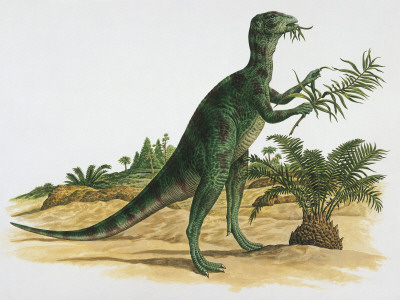











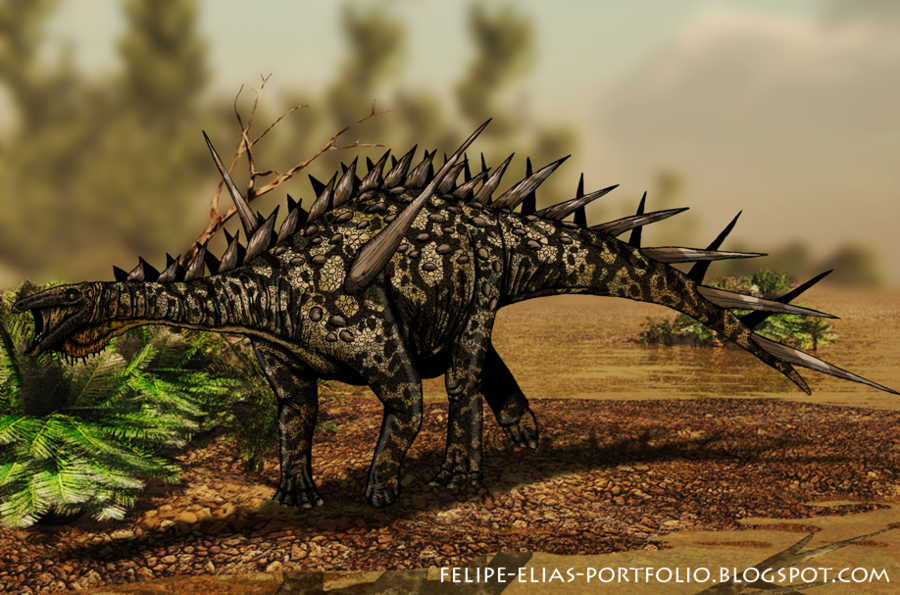

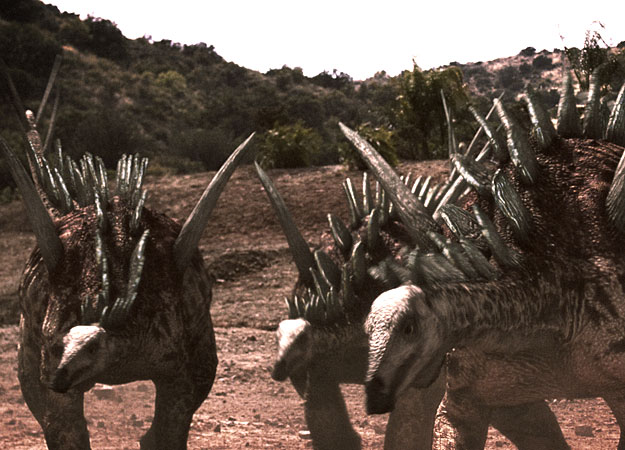

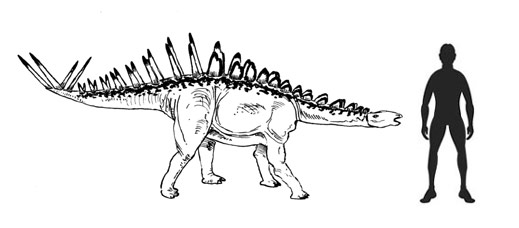




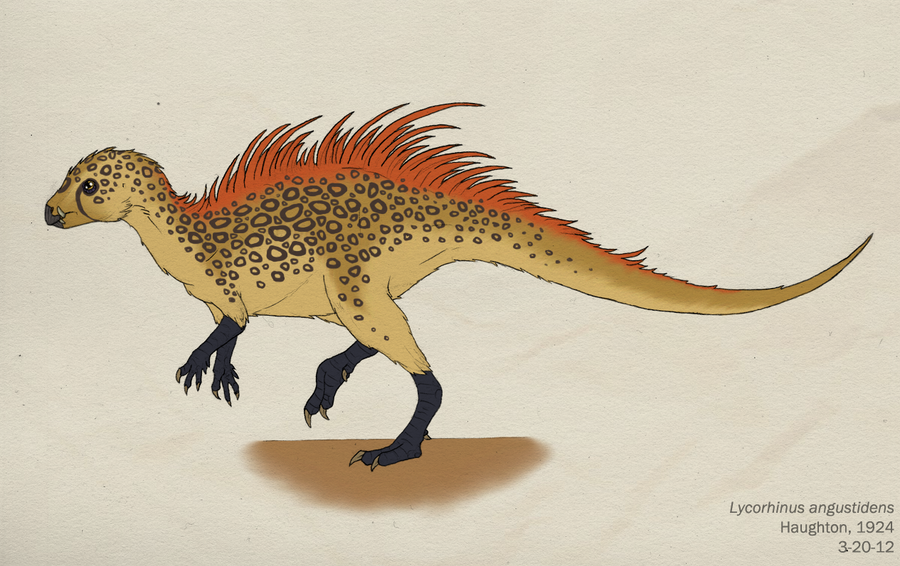




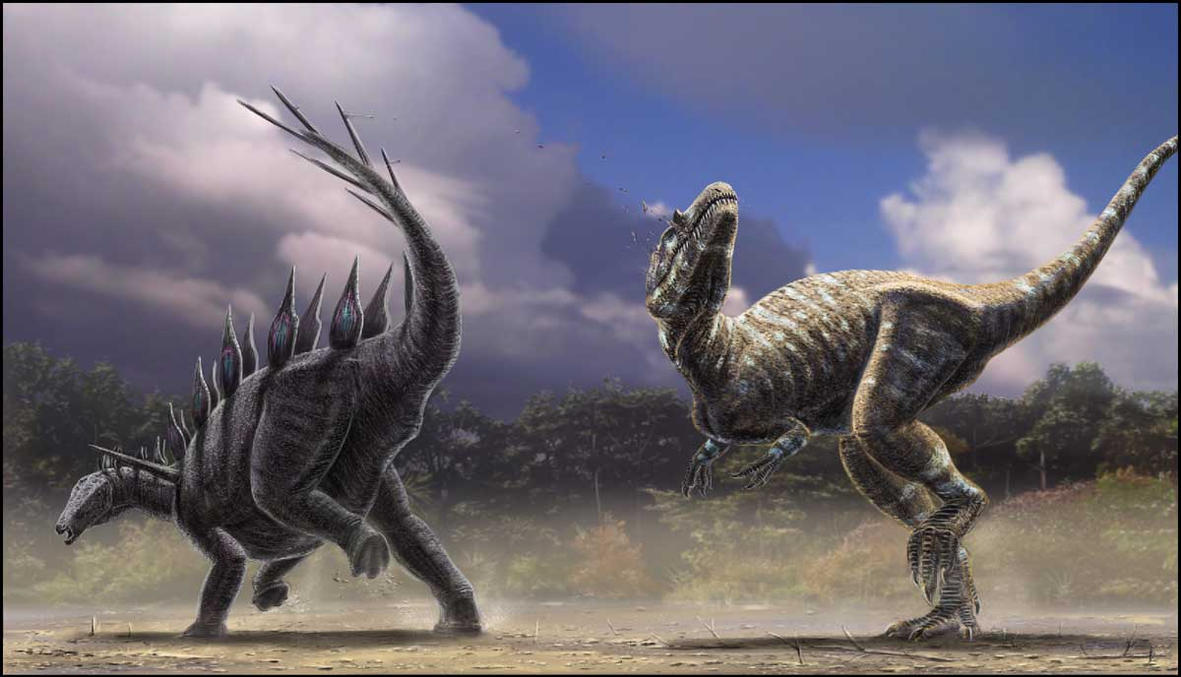
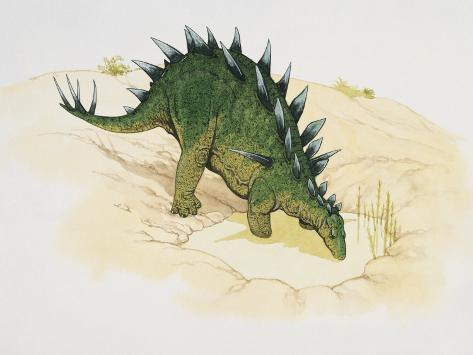
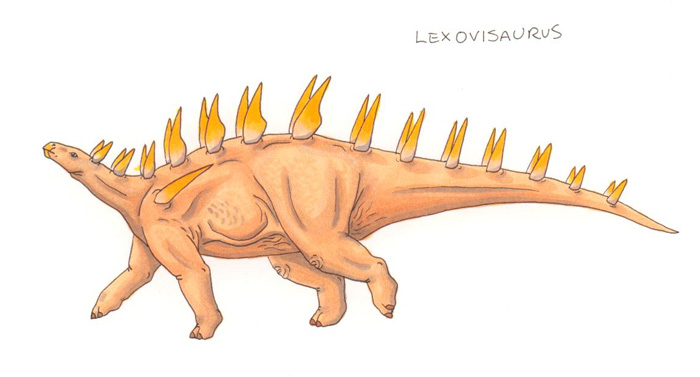
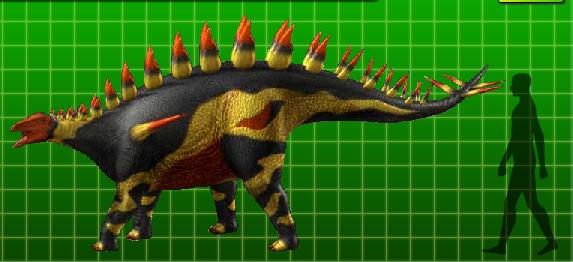




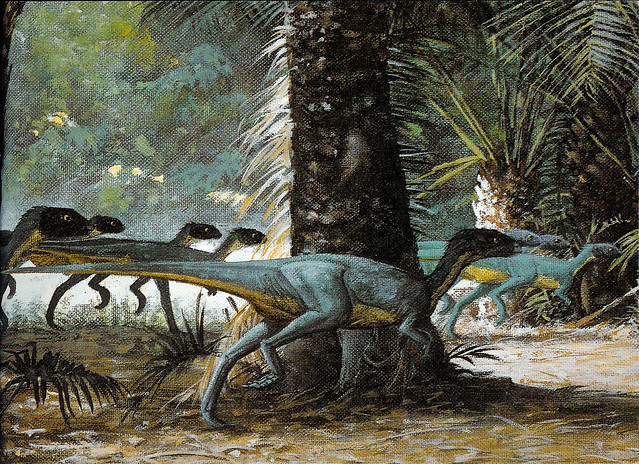
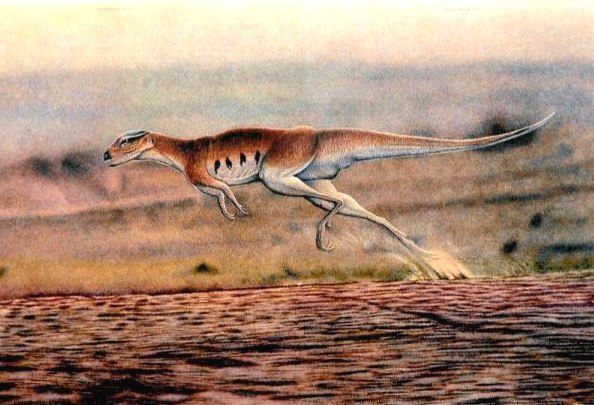
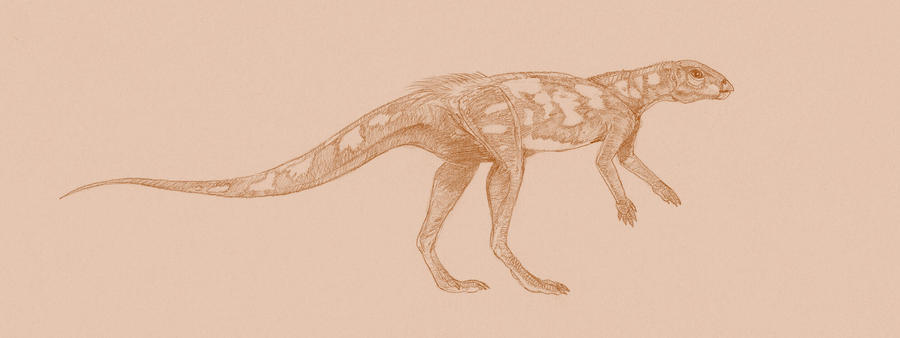
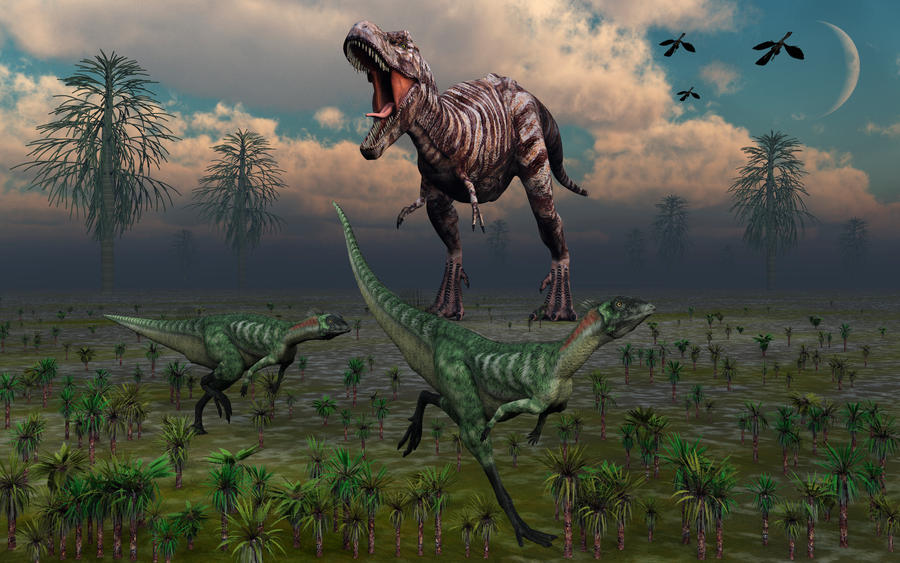




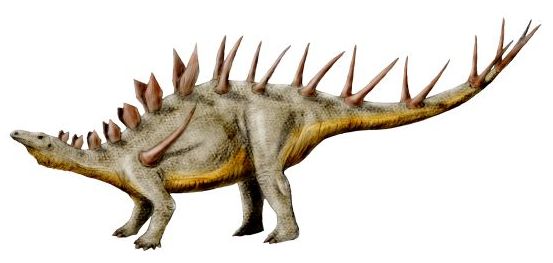
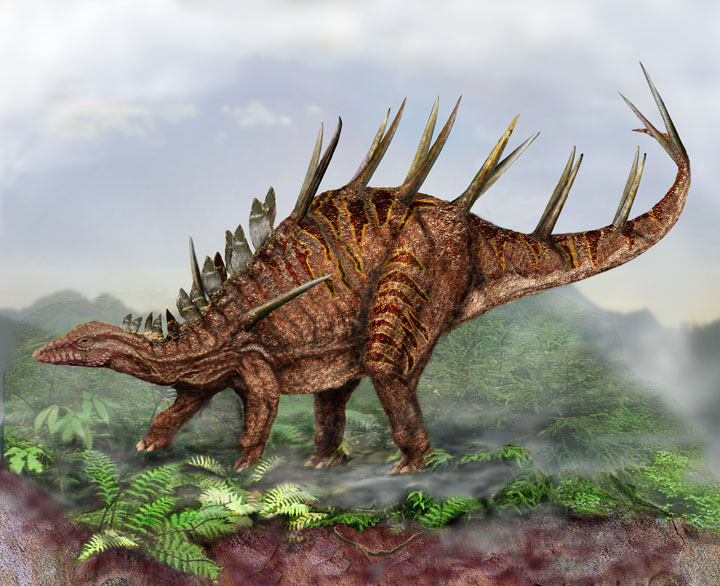









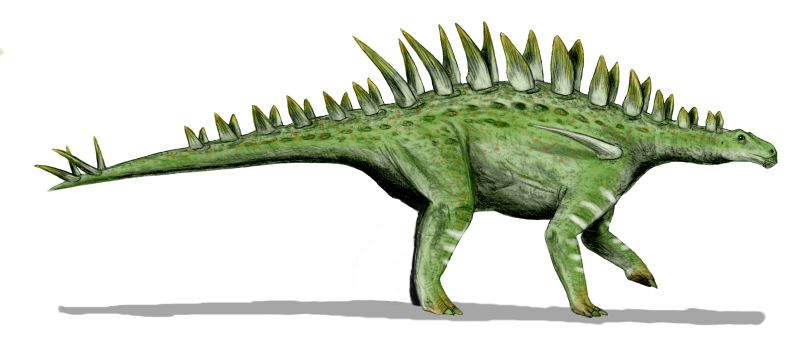






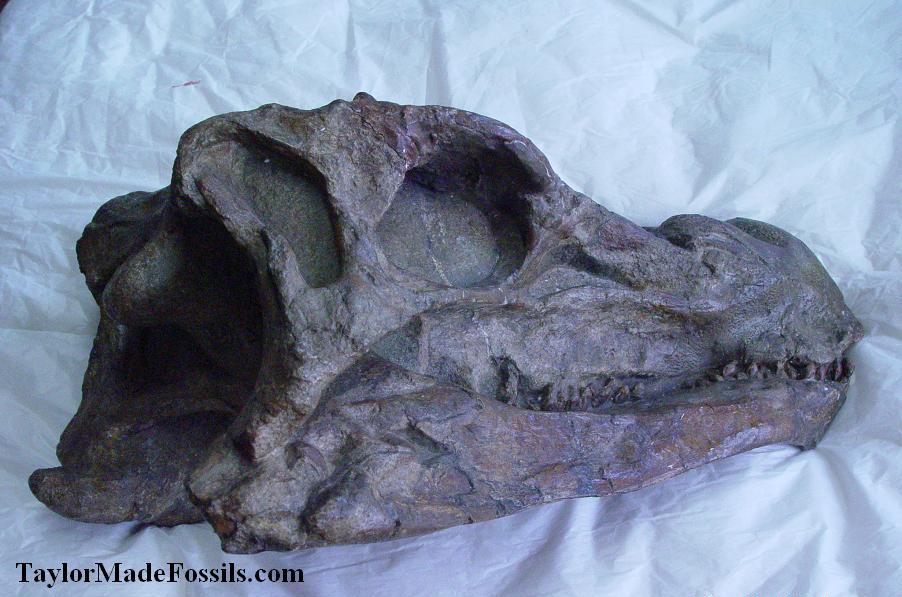


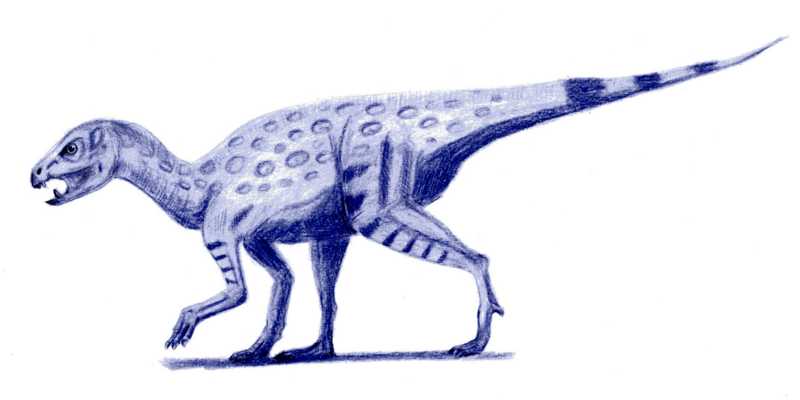











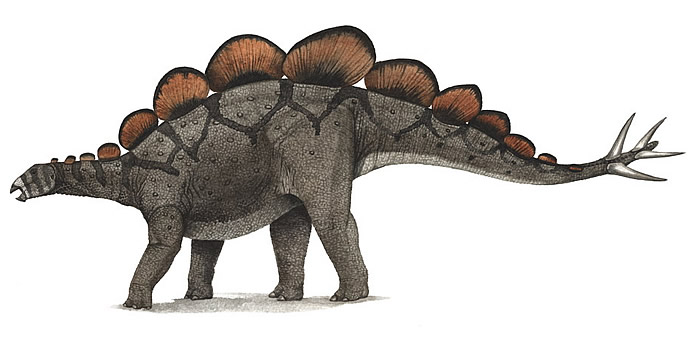

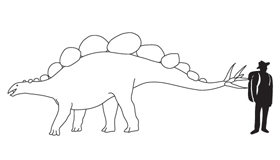




/Gigantspino_1.jpg)
